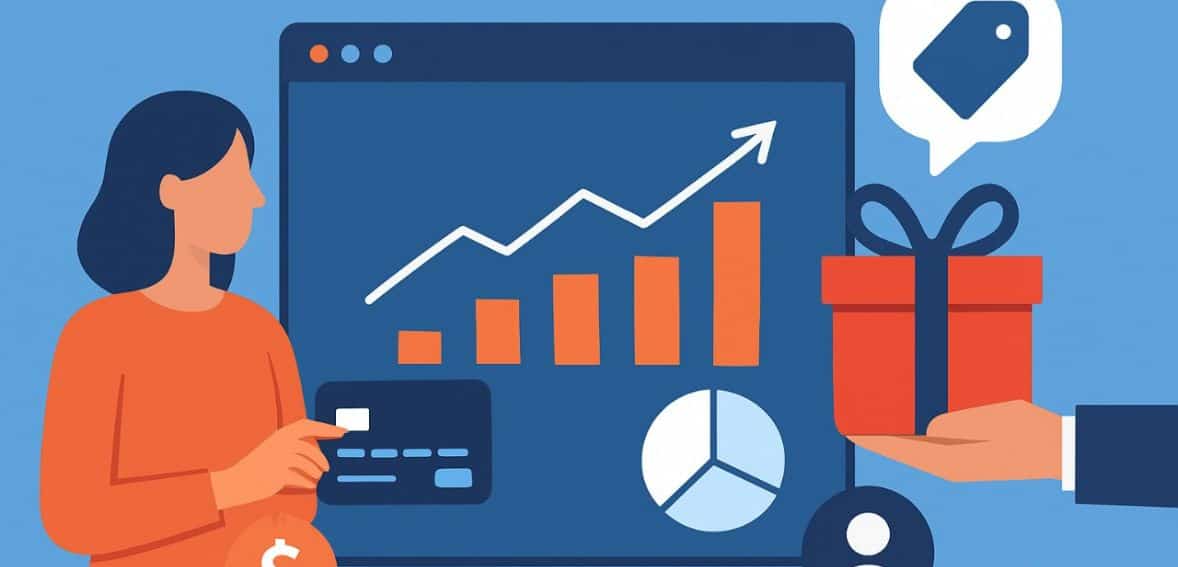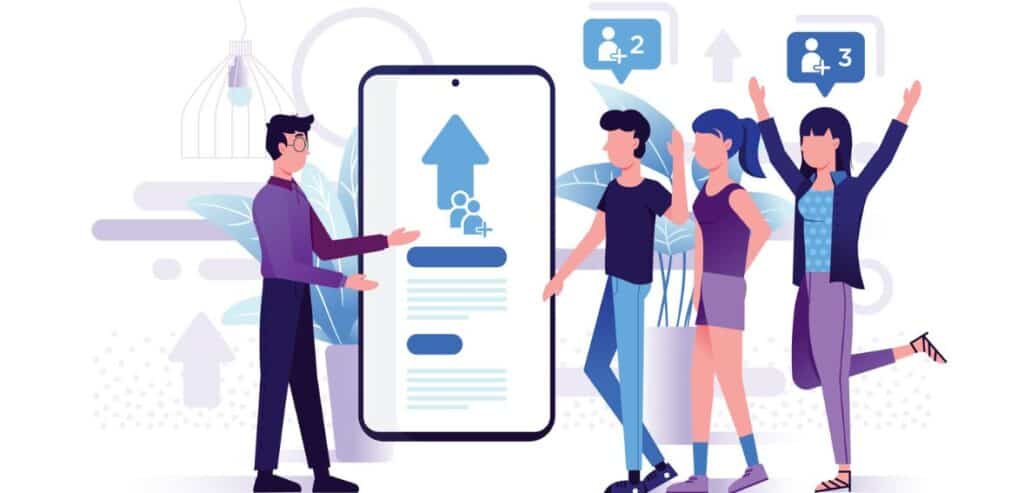
By alphacardprocess September 18, 2025
Personalization has emerged as the key differentiator for companies in a variety of industries in today’s competitive market. Customers expect brands to know their preferences and anticipate their needs; they no longer want to feel like they are just another transaction.
Modern tools now enable businesses to delve deeper into actual behavior, whereas traditional marketing frequently relied on demographic categories or assumptions. In particular, payment analytics has become a potent tool for revealing information concealed in routine transactions.
Businesses can create promotions and service add-ons that feel truly relevant by examining customer spending habits, purchase timing, and preferred payment methods. In addition to increasing engagement and loyalty, this turns routine purchases into tailored experiences that improve long-term profitability and customer relationships.
The Growing Demand for Personalization

In modern commerce, competition is growing in all sectors. Retail, dining, and online subscriptions are just a few of the countless options available to consumers, and companies are always under pressure to differentiate themselves in significant ways.
While price wars and eye-catching ads may garner attention in the short term, they rarely foster the enduring loyalty necessary to maintain profitability. Customers now want relevance instead.
They want companies to know them, anticipate their needs, and provide them with experiences that are tailored to them and seem as if they were created especially for them. Entire industries have changed as a result of this trend toward personalization, and one frequently underutilized resource at the core of this change is payment analytics.
Payments as a Source of Insight
Customers provide important information each time they make a purchase. In addition to what they purchased, their payment information shows how frequently they return, how much they spend, when they buy, and even which channels they prefer. Businesses gathered this data for years without really making the most of it.
However, as technology develops, payment analytics has become a potent tool for personalization, allowing businesses to create loyalty programs, promotions, and service upgrades that appeal to specific consumers on a deep level. Businesses can now offer exactly what each customer is likely to value, rather than promoting generic discounts.
Recreating the Local Shopkeeper Experience
The concept may sound high-tech, but the principle is very human. People want to feel recognized. Just as a local shopkeeper once remembered a customer’s favorite product and greeted them by name, businesses today can recreate that sense of personal connection by using the insights hidden in payment patterns.
The scale is different, but the impact is the same: a stronger bond between buyer and seller, one that goes beyond transactions and creates a sense of belonging.
Turning Numbers into Stories
Payment analytics turns anonymous data into meaningful stories. When a subscription gym finds that some of its members freeze their accounts in the winter, it may decide to advertise indoor classes or online training sessions at the right time.
A coffee chain might offer a customized offer that introduces a regular customer to breakfast items after noticing that they purchase lattes every morning but never try the food menu.
In order to promote carefully chosen gift bundles for holidays and birthdays, an online retailer may be able to pinpoint a market of consumers who buy presents during these occasions. These subtle yet highly effective insights help shape promotions that increase engagement and boost sales.
What Payment Analytics Really Involves

It’s crucial to examine what payment analytics entails to understand how it functions in reality. Fundamentally, it is the procedure for gathering, classifying, and analyzing transaction data. Purchase frequency, transaction size, payment method, timing, and location are all included in this data.
When combined, it creates a clear picture of consumer behavior. Businesses can precisely filter and segment this data using modern analytics platforms. The outcome is actionable intelligence that informs marketing and service choices rather than merely knowledge for the sake of knowledge.
Whether it’s a salon, spa, clinic, or fitness center, optimizing front-desk operations contributes to higher satisfaction, repeat visits, and better reviews. By investing in seamless front-desk transactions that reduce friction at checkout, salons can deliver both speed and professionalism while elevating the overall client experience.
Retail, Restaurants, and Service Examples
Think about how this shows up in various industries. An apparel retailer may use analytics to monitor seasonal purchasing patterns. It can determine which customers typically purchase winter coats in October and which ones make larger purchases in March for spring collections, rather than announcing a general sale to all of them.
Then, promotions can be sent at the precise time that each group is most responsive. This precise timing lowers marketing waste while raising conversion rates. Analytics in the restaurant business may show that certain customers only order delivery during the week but only eat in on the weekends.
Specialized weekday promotions that fit their routines become available as a result. From spas to home repair businesses, service sectors can monitor which add-ons are most frequently purchased together, allowing them to recommend complementary services in ways that feel natural rather than pushy.
Beyond Demographics: Real Behavior Matters
Payment analytics is amazing because it can go beyond demographics. Traditional advertising frequently depended on presumptions about income, gender, or age. These categories are helpful, but they only provide a general picture.
On the other hand, payment data shows actual behavior. A company may believe that young adults are the main buyers of a particular product, but analytics may show that middle-aged consumers are the ones who buy it most frequently.
By challenging presumptions and establishing marketing in reality, these insights ensure that strategies are based on real behavior rather than outdated stereotypes.
Enhancing the Customer Experience
However, personalization is more than just increasing sales. Additionally, it improves the client experience. Every day, people are inundated with offers that aren’t relevant, and many of them are just ignored. Customers feel understood rather than singled out when promotions are in line with their real needs.
For example, a pet supply store might discover that a customer buys dog food every six weeks. The store demonstrates consideration for the customer’s routine by sending a gentle reminder email at that time of year and combining it with a deal for related products. By doing this, the brand is positioned as a helpful partner rather than merely a seller, saves the customer time, and builds loyalty.
Service Add-Ons as Helpful Solutions

The same holds for service add-ons. Upselling can become a supportive experience when analytics show when that customers might benefit from extra services. For example, a customer who frequently schedules oil changes but never chooses to have their tires rotated may be noticed by a car repair shop.
The shop can offer the add-on as a value-driven service instead of a sales pitch by highlighting how tire rotations prolong the life of their car. In the medical field, a clinic may observe that patients who pay for regular examinations infrequently make time for wellness screening follow-ups.
With this knowledge, the clinic can design packages that include preventative screenings and check-ups, positioning the add-on as a means of protecting health rather than raising costs.
The Role of Trust and Responsibility
It goes without saying that using payment analytics calls for responsibility. Customers are becoming more conscious of how businesses use their data, so businesses need to be transparent and respectful when it comes to personalization.
While aggressive targeting can backfire, open communication about data practices fosters trust. Enhancing the customer journey—rather than controlling it—should always be the aim. When done well, personalization via payment analytics benefits both parties: businesses gain more revenue and loyalty, and customers have more relevant experiences.
The Future with AI and Predictive Models

With the development of machine learning and artificial intelligence, this practice appears to have an even brighter future. Large datasets can be analyzed more accurately by these technologies, which can spot patterns that people might overlook. They can forecast a customer’s likely next course of action in addition to their past actions.
Consider an online bookstore that predicts a customer’s reading preferences and makes recommendations for new books based on those predictions, or a salon that uses predictive analytics to suggest hair treatments as a client’s regular appointment cycle draws near. These developments elevate personalization to a new level and turn it from reactive marketing into proactive relationship development.
Integration with Other Systems
Integrating payment analytics with other business systems is equally crucial. Payment data becomes a component of a broader ecosystem that facilitates cohesive customer engagement when it is connected to CRM systems, loyalty plans, and communication channels. Businesses can plan a smooth experience where incentives, promotions, and service add-ons all function together rather than having separate efforts.
Through the app, a customer can instantly receive a personalized promotion that takes into account their payment history and level of engagement after making an in-store purchase, as well as a loyalty update. Consistency is produced by this integration, enhancing the perception that the brand understands and values the consumer at every touchpoint.
Balancing Personalization and Efficiency
Businesses must, however, strike a balance between efficiency and personalization. Despite the temptation to develop extremely targeted advertising for each market niche, the truth is that resources are scarce.
The most successful strategies frequently concentrate on high-impact insights—patterns that have a major influence on significant portions of the customer base. The secret is to begin with small, manageable projects, gain insight from their outcomes, and then progressively improve the strategy. Even modest personalization efforts over time can result in notable increases in lifetime value and customer retention.
Why the ROI is Hard to Ignore
When thinking about cost-benefit analysis, it is evident that one of the best returns on investment in modern businesses is provided by payment analytics. The data, which was produced by routine transactions, is already there. Even for small businesses, the tools to analyze it are getting easier to use and more reasonably priced.
Targeted, effective, and quantifiable, personalized promotions based on payment data are less expensive than general marketing campaigns with unpredictable outcomes. Customers come to view the company as attentive and reliable, which has a reputational impact in addition to a financial one.
Challenges and Responsibilities
Of course, there are challenges. Clean systems are essential for data accuracy, and companies need to make sure that their analytics tools are correctly connected with payment processors. Care must also be taken when storing and using data in accordance with privacy regulations.
To guarantee that insights are applied thoughtfully rather than robotically, staff training is crucial. However, these difficulties are not insurmountable. Responsible handling of them can actually become a component of the company’s value proposition, letting clients know that their data is taken seriously.
The Shift from Optional to Essential
The basic reality behind all of this is that personalization is now required. Consumers now believe experiences that fit their tastes and habits. Businesses that embrace this shift establish themselves as leaders in customer-centric service, while those that ignore it run the risk of coming across as antiquated and impersonal. The basis for this change is payment analytics, which transforms ordinary transactions into significant relationships.
Data as Customer Narratives

Businesses that view data as narratives rather than just numbers will be the ones that thrive as commerce develops further. Payment analytics provides information about a customer’s identity, values, and brand interactions.
Businesses can become trusted partners in the customer journey rather than just suppliers of goods and services by hearing that story and reacting appropriately. Promotions will now be welcomed reminders rather than interruptions.
Service add-ons will feel more like considerate suggestions than upselling. To put it briefly, payment analytics enables companies to fulfill their long-held goal of providing better, more individualized, and more efficient customer service.
Conclusion
Personalizing is now expected rather than a luxury. Consumers want interactions that are tailored to their preferences, and businesses that don’t change run the risk of falling behind. The road map for satisfying this demand is provided by payment analytics, which transforms unprocessed transaction data into useful insights that direct loyalty plans, promotions, and service upgrades.
When used properly, it improves customer experiences by adding relevance and significance to each interaction. Customers feel heard and valued as a result, and businesses benefit from increased retention, stronger loyalty, and long-term growth.
Businesses of all sizes can future-proof their strategies and maintain their competitiveness while also becoming trusted partners in their customers’ changing journeys by embracing payment analytics today.